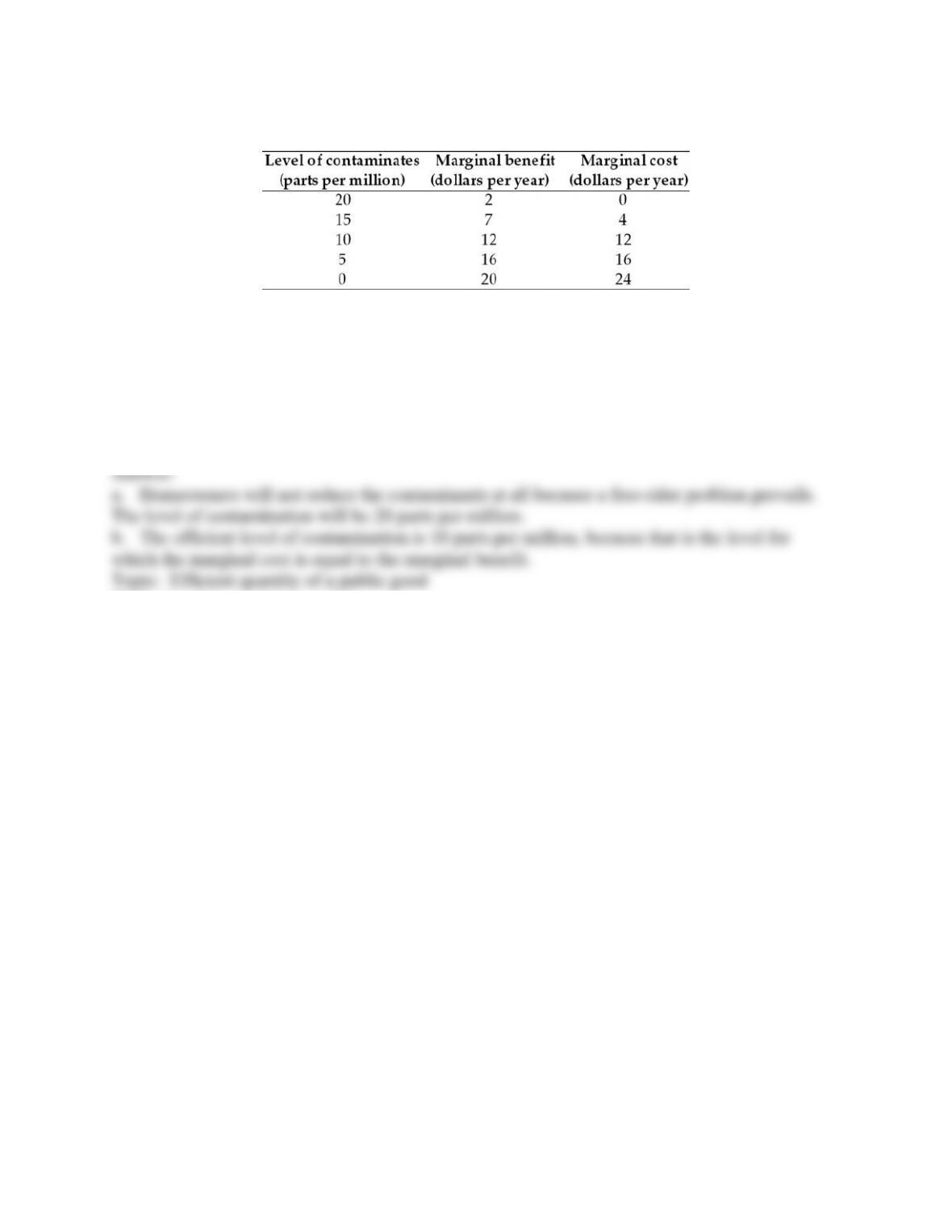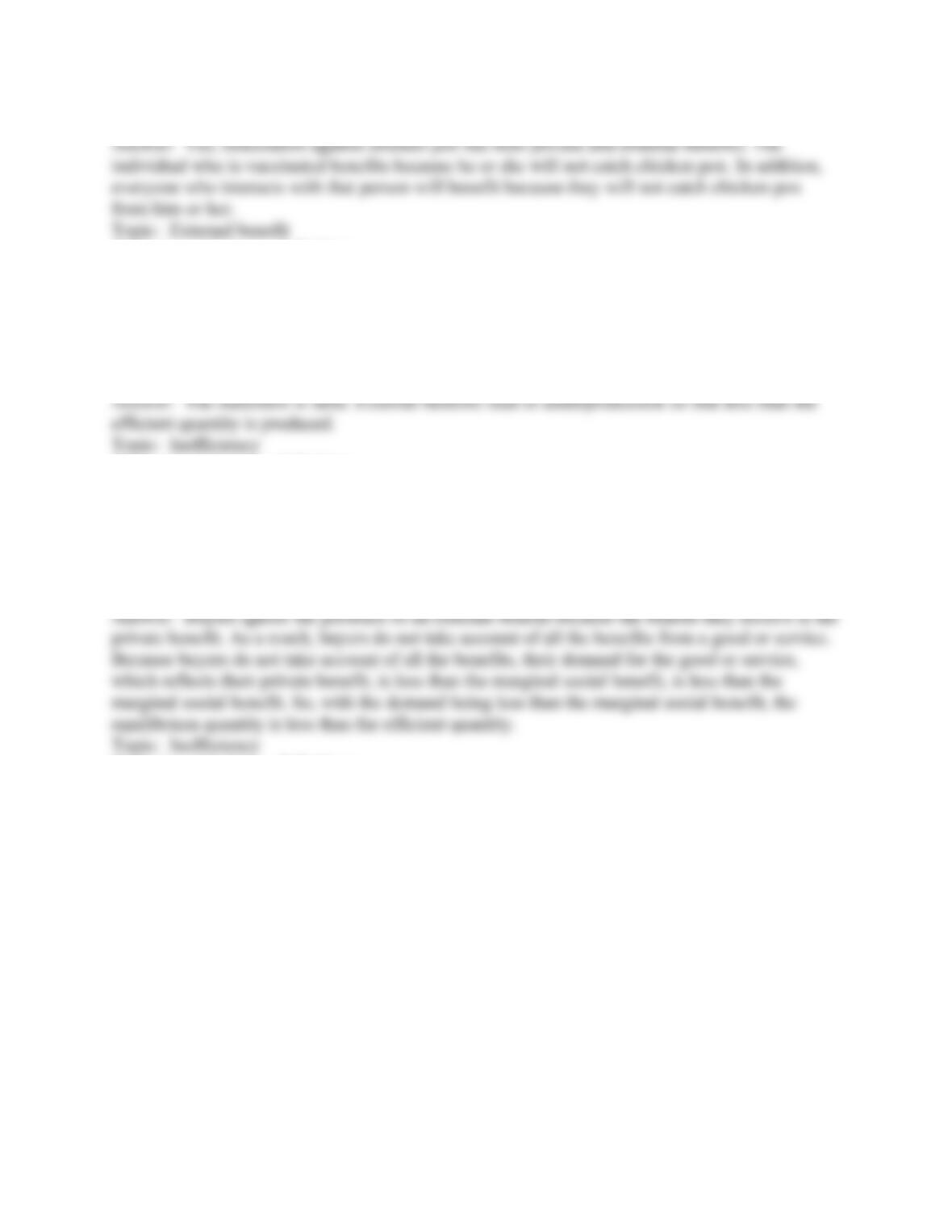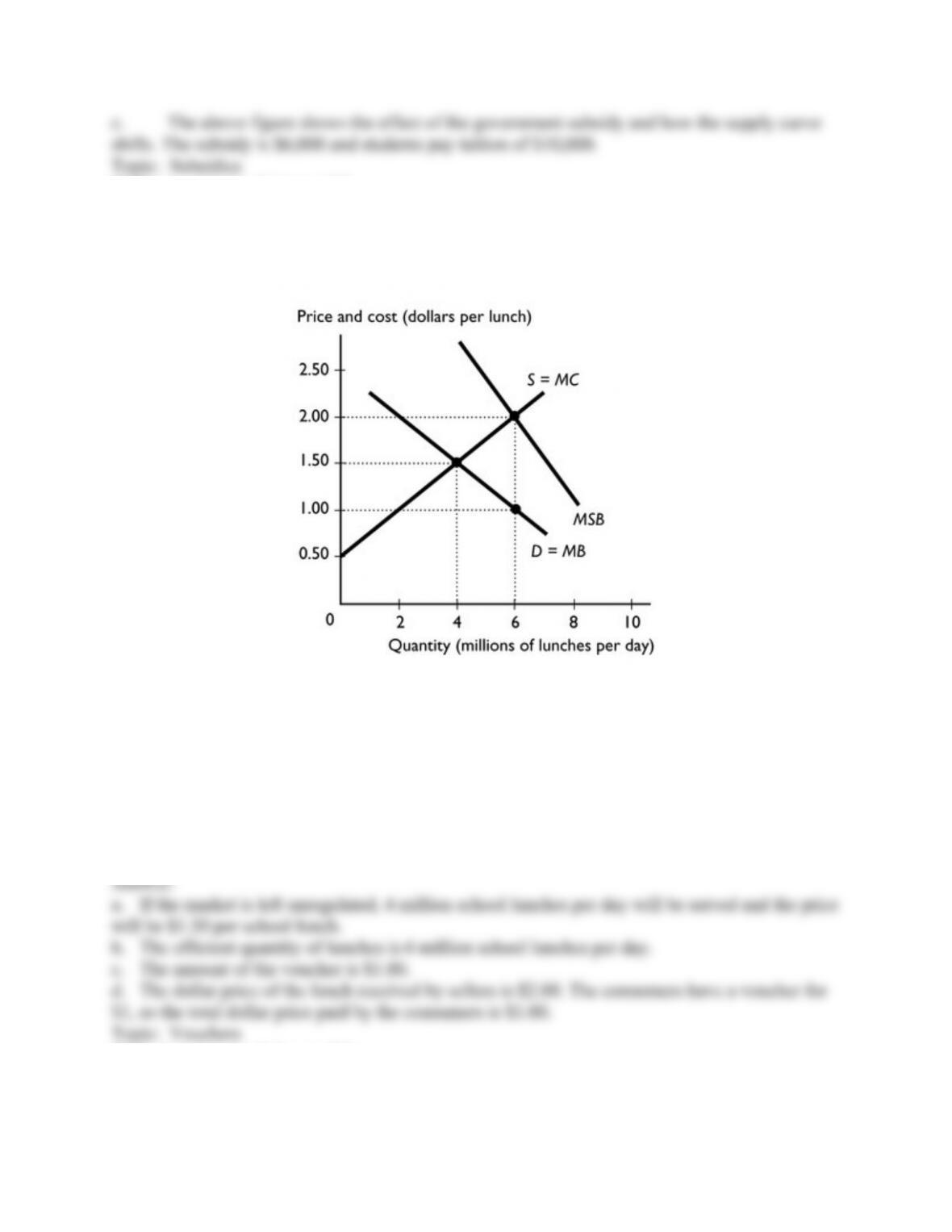
106
Copyright © 2011 Pearson Education, Inc.
11) The table above gives the marginal social cost (which equals the price), marginal private
benefit, and marginal social benefit of students attending Diablo Valley College (DVC) in
Concord, California.
a. When 4,500 students attend DVC, what does the marginal external benefit equal?
b. If the market is competitive and left without government intervention, what is the quantity of
students that will attend DVC and what will be the price of a course?
c. What is the efficient quantity of students attending DVC?
d. If the government can set the price per course, in order to have the efficient quantity of
students attending DVC, what should the government set as the price?
Skill: Level 3: Using models
Section: Checkpoint 10.3
Author: JC
AACSB: Analytical reasoning

















